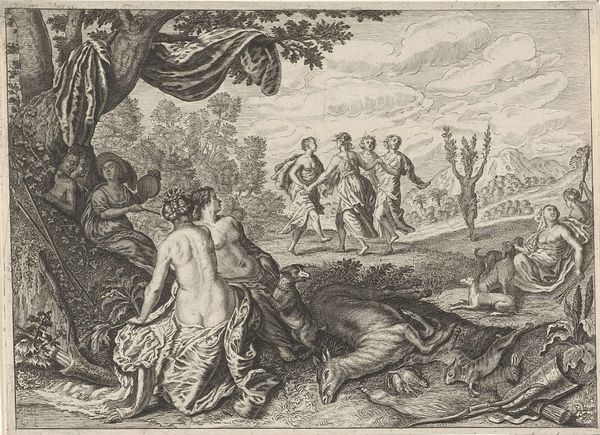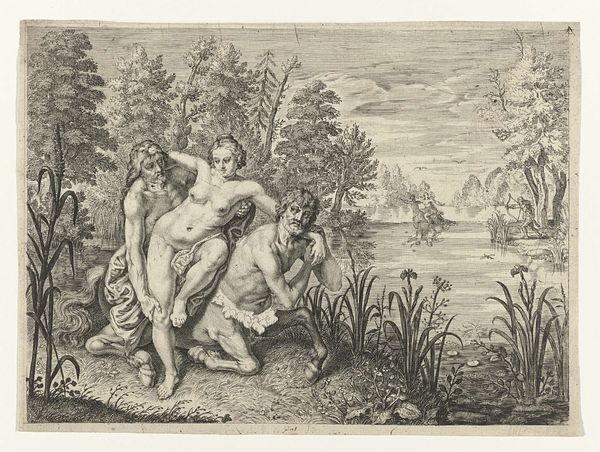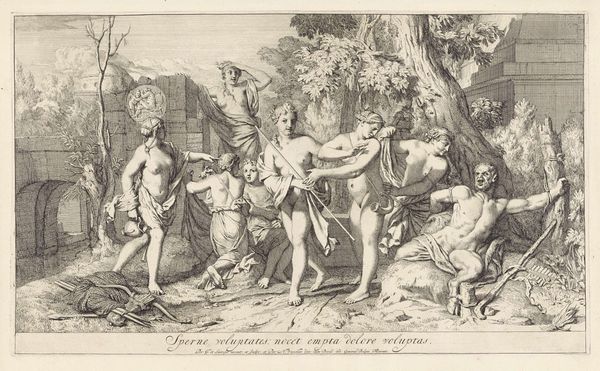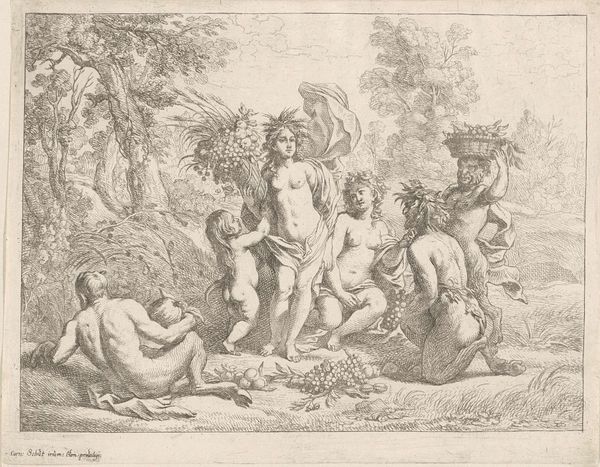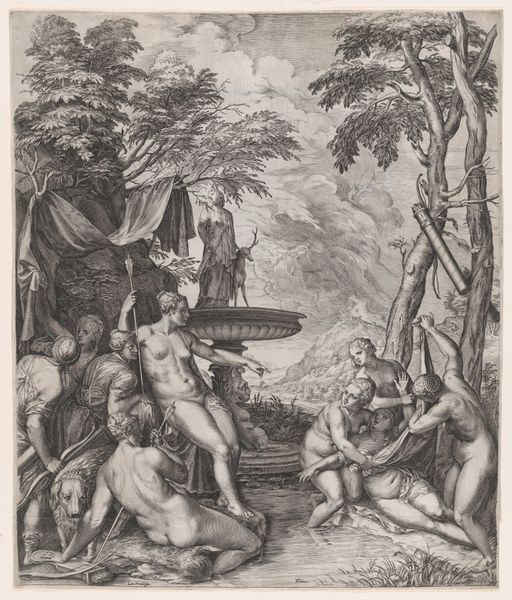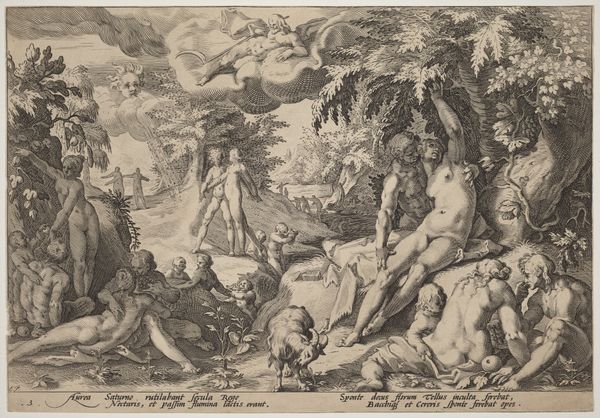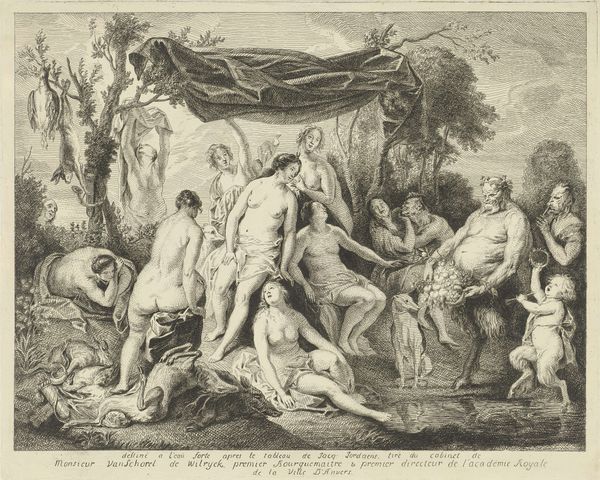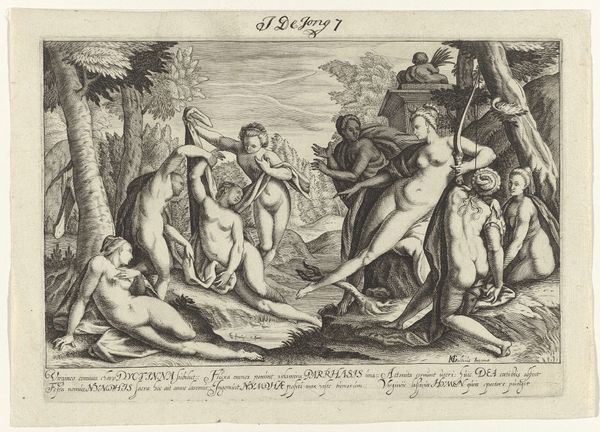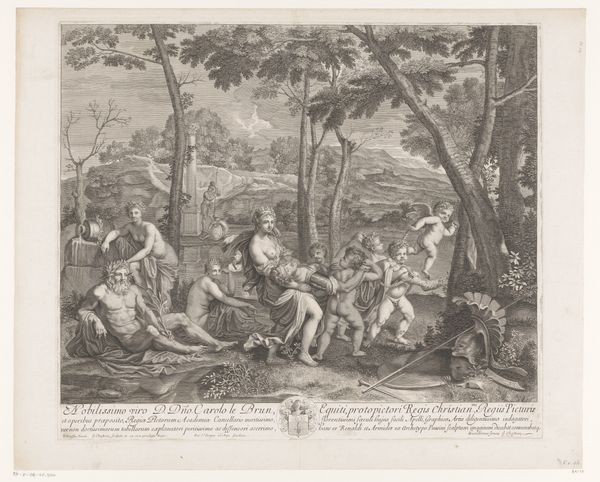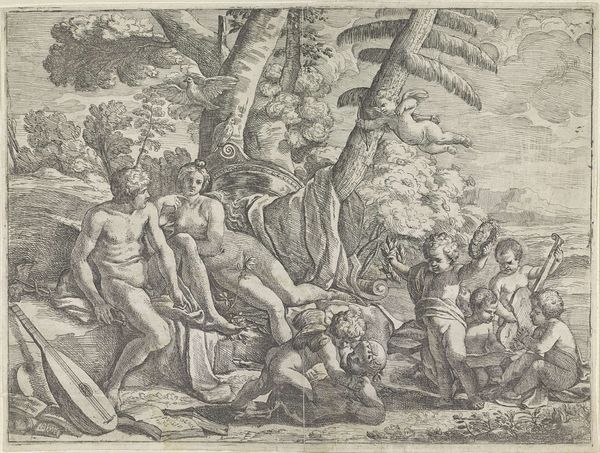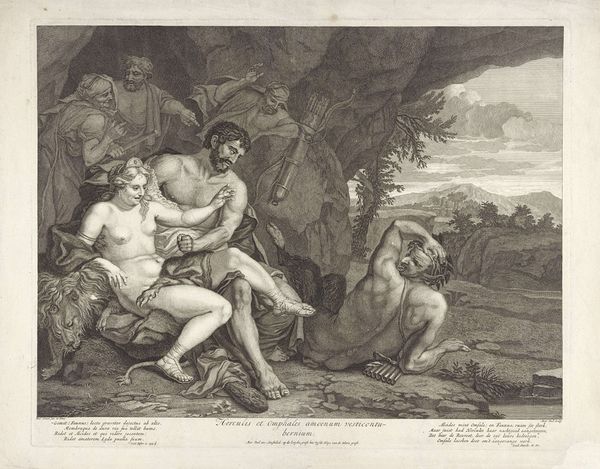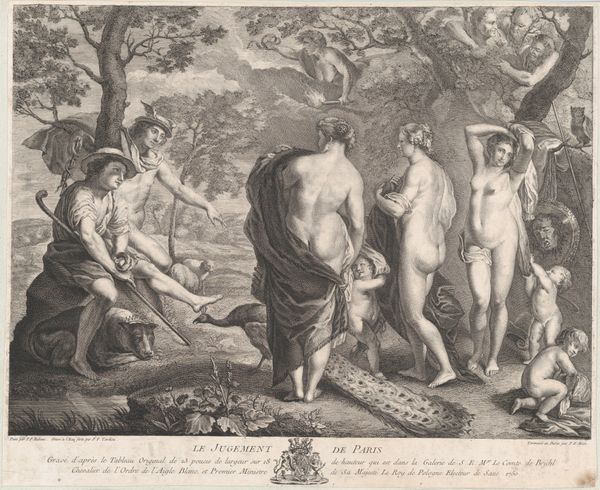
drawing, ink, engraving
#
drawing
#
allegory
#
pen drawing
#
pen illustration
#
pen sketch
#
mannerism
#
figuration
#
ink
#
nude
#
engraving
#
erotic-art
Dimensions: height 224 mm, width 299 mm
Copyright: Rijks Museum: Open Domain
Curator: So, here we have "Wederkerige Liefde", or "Reciprocal Love", a Mannerist engraving done in ink by Agostino Carracci around 1589 to 1595. It’s part of the Rijksmuseum collection. Editor: It’s a bacchanal! Just look at all those bodies, entwined! Feels…intense. Like love turned into a fever dream. Curator: Indeed. Look closer at Carracci's choice of ink and engraving technique; the lines are so delicate, creating a sense of both form and movement. There’s a contrast, you know, the refined execution with the rather, uh, boisterous scene. Editor: It's certainly boisterous, but it's also all about production and distribution! This wasn't about the artist's solitary genius; it was about creating multiples, replicating an image for consumption. It cheapens it, somehow. Curator: Does it cheapen, or does it democratize? Consider the symbolism woven into the scene: it’s an allegory! The abundance of bodies and cupids... these are emblems, symbols representing the overwhelming nature of love and desire. I wonder, though, looking at that perfectly centered group of figures dancing and clasping hands in the middle ground, what did this mean to the viewers of Carracci's era? What am I even supposed to make of it now? Editor: I would say we consider Carracci and his contemporaries. They weren't just creating "art," they were participating in a market. Who were the consumers of these erotic images? It shows how artists had to grapple with market forces! We see a very similar image to this appear in other artworks as engravings. Curator: Still, Carracci really makes those figures shimmer, the light feels caught within each curl of hair, within each glance exchanged. It speaks of this human longing. You have to surrender, completely abandon any pretense of control and decorum, but this is still an item for purchase! It’s rather paradoxical, don't you think? Editor: Absolutely paradoxical. It raises vital questions about the relationship between art, commerce, and morality. Curator: Right. Well, thank you, your perspective is helpful. It does make me think differently, seeing that other view and what can happen with images as art becomes another tradeable entity. Editor: My pleasure, and, ultimately, this exploration of the artist, the artistic work, and labor practices can reshape and challenge how art is being made, understood, and consumed.
Comments
No comments
Be the first to comment and join the conversation on the ultimate creative platform.
